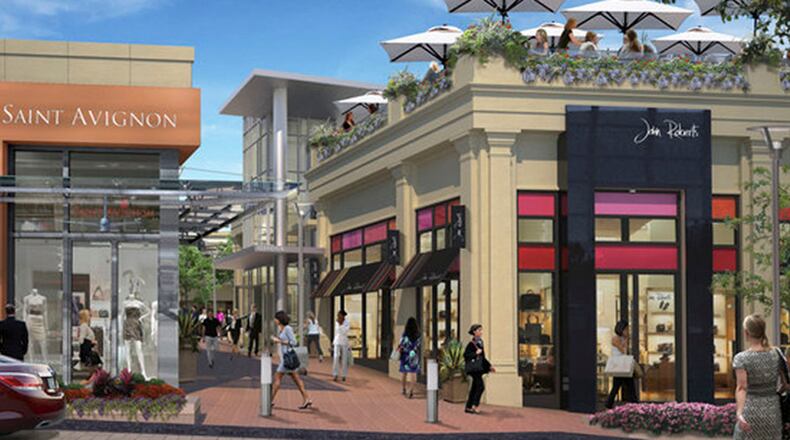The talking point’s a grabber: Metro Atlanta has reached “peak sprawl.” As in more development is becoming “urban” development. As in the old way of building subdivision after suburban subdivision has been supplanted by a new real estate mode — the proliferation of intown multi-purpose hot zones where folks can walk to their desired destinations.
Now comes the kicker: Many of these new urban locales are actually in … the suburbs.
That, perhaps, is a revelation for many in this vast metro area. For it turns on its head the classic, if too-simplistic ITP-versus-OTP public policy debate over what the future will look like here in terms of brick-and-mortar. It’s an interesting argument, too, because Atlanta is widely known as perhaps the least densely populated big city in the entire world.
So it’s instructive, in our view, that private-sector developers — not public-sector planning types — are making substantial investment bets that many of us here will live, shop and work in a different manner than in the recent past — no matter where we live.
That should be comforting to those who’ve worried that regional policy thinkers or government will impose urban development solutions on either the unsuspecting or the unwilling. And that’s certainly not the motivation where the private sector is betting its own capital on successfully meeting the desires of metro Atlantans.
In fact, the “urbanization of the suburbs” is helping drive the real-estate market both in Atlanta and outside the perimeter, says Christopher B. Leinberger, a land-use strategist, professor at the George Washington University School of Business and author of a new report called “The WalkUP Wake-Up Call: Atlanta.” (www.atlantaregional.com/walkups).
The study says land use in metropolitan areas can be defined two ways: “drivable suburban” and “walkable urban.” Drivable suburban places, as you might expect, are low-density spreads where you need your car to get anywhere. They offer “stand-alone real estate products” — homes over here, strip mall there, office park that way — connected mostly by highways and major arterials. The building of “drivable suburban” places is what fueled metro Atlanta’s economy for decades.
Walkable urban places have much higher density. They integrate real estate products in the same place — office, retail and residential. They welcome multiple modes of transportation — public transit, autos, bicycles and, obviously, your feet. No matter how you reach a “WalkUP,” everything is walkable once you’re there. “It’s much tighter, just a few hundred acres at most,” says Leinberger, a developer himself, whose team collaborated with the Atlanta Regional Commission and Georgia Tech to build on research formed at the Brookings Institution.
Walkable urban downtowns are in demand all over. Some are the traditional crossroads established decades ago (Marietta, Roswell, Decatur), only to be reinvigorated. They continue to thrive. Others are germinating now, from Brookhaven to Hapeville, from Cumberland to Morrow, from Suwanee to Serenbe.
Atlanta’s walkable urban places, the study says, are commanding “an impressive rent premium over its drivable sub-urban areas.” Real estate demand is shifting toward the urban infrastructure that’s being built, Leinberger says, to fill in where road infrastructure came first.
According to the study, the 36 established and emerging WalkUPs consume less than one percent of metro Atlanta’s land mass. Yet in the real estate cycle begun in 2009, “60 percent of all development delivered to the market by square footage has gone to walkable urban places.”
Still, the study is hardly a slam dunk. Detractors say the methodology invites scrutiny. Some observers question the “duh” factor in the idea that vibrant dense areas are good at drawing more investment.
But there’s no denying the appeal of “WalkUPs” and the validity of the walkability trend — see, for example, the burgeoning downtown on Dresden Road behind the Brookhaven MARTA station, or the lower Howell Mill district in West Atlanta.
It’s even harder to discount city-centric activity when it’s occurring well beyond the Perimeter, in places where many people have no urge to live in the city.
New urban-style development doesn’t mean, Leinberger says, that the suburbs as we know them are on their way out. What it does enforce perhaps is the notion that while people still love their cars, many like to be free of them whenever they can.
And providing a wider variety of lifestyle and living options across our metro will make it easier to keep this region competitive in a global economy. That’s a sound way to build for the future.
About the Author
Featured

